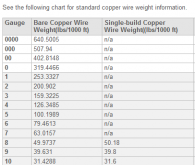After reading and reading again the Victron Wiring Unlimited document, I might connect the 8 Rolls 6v batteries using busbar, as they show in the document.
Went rummaging around in the scrap metal pile, found this 10mm thick piece of silver plated copper.
I can cut this up to make busbar.
What is the relationship of copper density to current?
For instance, if I make the bars 14mm wide, the plate is 10mm thick, is that enough mass for the current, so as to avoid unnecessary resistance losses?
I found this formula, looks like capacity of 168A , seems OK to me.
Take a copper bus bar of 100 mm width and 10 mm thickness, the area of the copper bus bar is 10 * 100 sqmm. The total current carrying capacity of the busbar is 1.2 * area => 1000 sqmm* 1.2 =1200 Amps.

Went rummaging around in the scrap metal pile, found this 10mm thick piece of silver plated copper.
I can cut this up to make busbar.
What is the relationship of copper density to current?
For instance, if I make the bars 14mm wide, the plate is 10mm thick, is that enough mass for the current, so as to avoid unnecessary resistance losses?
I found this formula, looks like capacity of 168A , seems OK to me.
Take a copper bus bar of 100 mm width and 10 mm thickness, the area of the copper bus bar is 10 * 100 sqmm. The total current carrying capacity of the busbar is 1.2 * area => 1000 sqmm* 1.2 =1200 Amps.




